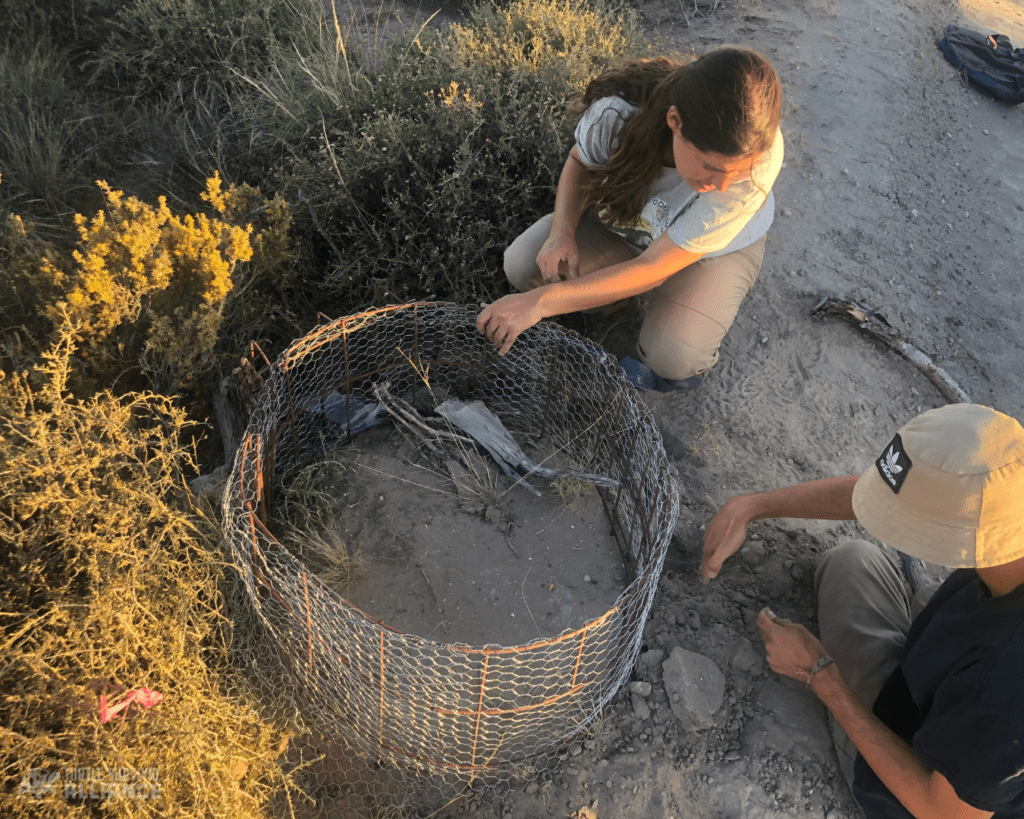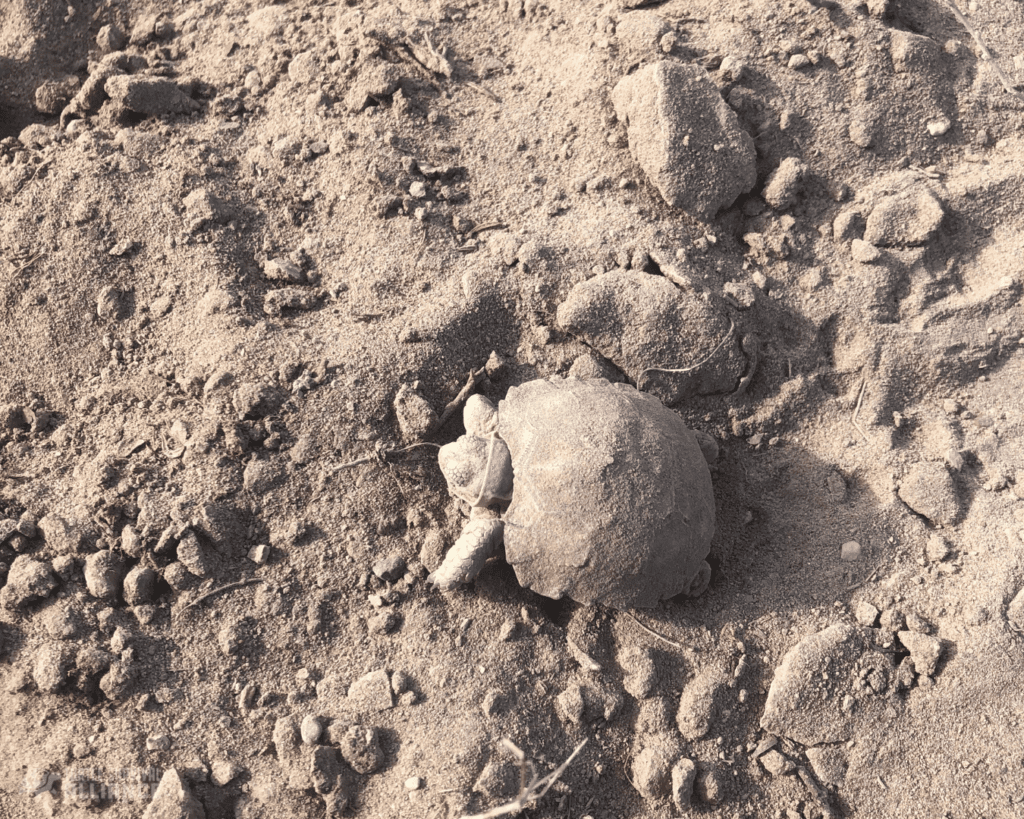The First Birth in the Chaco Tortoise Program: A Story of Rescue and Hope
Turtle Survival Alliance supports the work of María Eugenia Echave and Erika Kubisch for the study and conservation of the Chaco Tortoise (Chelonoidis chilensis) in Argentina.
By María Eugenia Echave and Erika Kubisch
A few years ago, we started working around an open water canal near San Antonio Oeste, in Northern Patagonia, Argentina, where we observed all kinds of animals, including the Chaco Tortoise, falling in. Throughout the summer, we had the opportunity to rescue many of them from that canal. Upon releasing some of them, we tracked them with radio transmitters for a few days to ensure they remained in good health and to see if they stayed in the vicinity or decided to move far away.
On November 10, 2022, we rescued a beautiful female that we assigned as T212. Realizing she had eggs, we decided to track her daily using a radio transmitter. On January 20, 2023, we had the incredible opportunity to witness her laying eggs. The sensation was incredible; we didn’t even realize what was happening at first and had to quietly retreat when we understood what was going on. It was 11:30 AM, and after observing her for almost an hour under the blazing sun, we saw her, completely exhausted, closing the nest she had painstakingly dug with her hind legs. We never saw how many eggs she laid, but once she moved a few meters away to rest in the shade, we approached and realized it was impossible to discern exactly where the nest was. She was very careful not to leave any trace of the miracle she had just created.
Once she left, we decided those eggs needed to be protected, as the area is home to many wild boar that leave nothing in their wake. It seemed unfair that after all her effort, and ours to keep her healthy and safe, those hatchlings wouldn’t get the chance to be born. So, we gathered all the materials we could find to create a barrier around the nest and protect those eggs, at least to give them the opportunity to hatch.
We knew we had to wait many months. Working in the southernmost part of Argentina, we have the southernmost tortoise population in the world. This means that they need a long time to hatch because, despite the very high temperatures in summer, winter temperatures are extremely low. As a result, the embryos enter a period of dormancy. We already had records of nests that took between 12 and 16 months to hatch, so we knew the wait would be long.
The following year, we returned to work in the area, and every day we checked on the nest, hoping to notice a small change that would indicate the hatchlings were about to emerge. However, the entire summer passed and nothing happened.

After 14 months of waiting, and upon learning that a motor grader was scheduled to pass through the area to repair the road where the nest was located, we decided to visit the nest one last time to verify if the eggs were fertile and in good condition to hatch. If they were, we planned to take them and allow them to hatch in captivity, releasing them in the spring to give them a better chance of survival.

However, when we arrived, there were still no signs of hatching. We began to dig carefully, and suddenly, we were startled to see something moving! To our incredible surprise, we discovered a fully hatched baby tortoise still completely buried, living within the air chamber its mother had created. Also in the nest, beneath the small hatchling, there was another egg that probably broke during laying.
The wait was definitely worth it. We never expected to find a hatchling already born and waiting to emerge. As the cold autumn weather was starting, we decided to protect it and allow it to brumate safely. When the warm days of October arrive, during our spring, we will release it back into the wild where it belongs. It’s incredible to realize that our efforts led to the birth of this beautiful creature. Even though it’s just one hatchling today, we know that our dedication will benefit many more in the future. This gives us the energy and motivation to continue our work.
To read more about the work we support in Argentina, read the full feature in Turtle Survival 2023.
Acknowledgments: we would like to thank Turtle Survival Alliance, Fundación de Historia Natural Félix de Azara, Turtle Conservation Fund, our volunteers Luis, Belén, Juan, Juana, Pau A., Yeye, Aye, Agus, Ro, Santi, Cami, Pau S., Fer, Oli, Kenya, Gaby, Catalina, Sebastián, Maxi, Peco, Martín, Milton.
Header image: Biologists María and Erika first encounter the Chaco Tortoise (Chelonoidis chilensis) hatchling, just taken from its nest. All photos by Maria Eugenia Echave.
